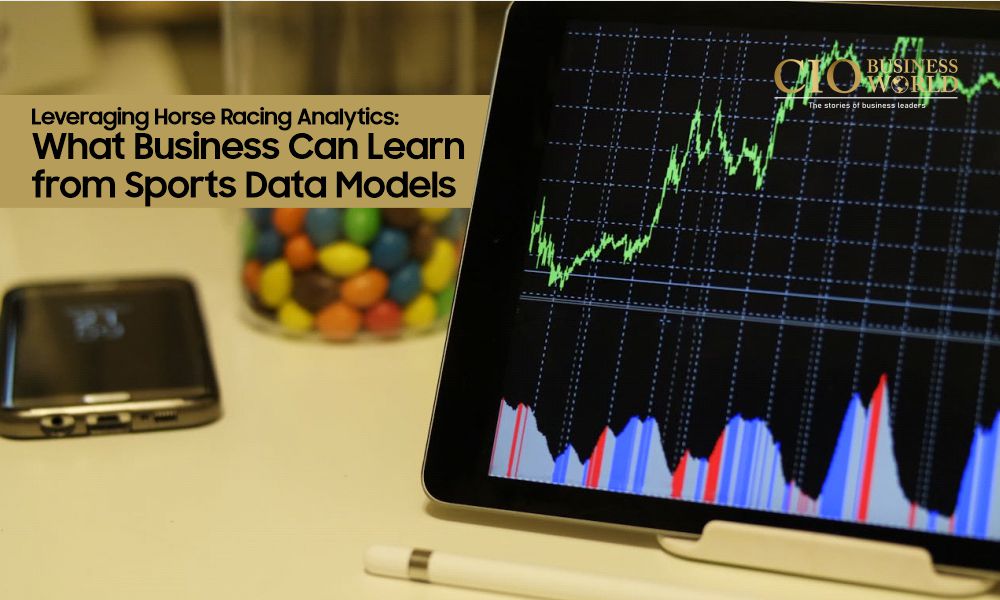If you’ve ever watched at least one-horse race, you already know that this is more than just horses racing down the finish line. It is a sport that blends speed, strategy, and instinct. But now, it’s also a sport were data drives things.
Trainers, owners, and even bettors rely on analytics to predict outcomes, craft strategies, and optimize performance. And guess what? Businesses are starting to take notes. But why? Well, horse racing is one of the oldest sports in the world, and over the years, it has perfected data analysis to a point where they can predict the future. That sounds quite attractive for businesses.
Imagine if a business could deploy the same methods from the horse racing industry to gather, structure, read, and analyze data that would help them predict market trends? That would be like having a cheat code in a video game.
All of this sounds attractive, but is it really possible? Can businesses use sports data models to craft strategies and make smarter decisions? Let’s find out.
The Importance of Metrics And How They Are Analyzed
Back in the days, horse racing was a simple sport, but today, a racehorse’s data profile includes heart rate, stride length, acceleration, pace, speed over the last furlong, and many other elements. A business has its own “stride patterns” such as conversion rates, customer lifetime value, churn, and daily revenue velocity.
In other words, businesses also have valuable metrics (key performance indicators) that they can use to create a strategy. The key insight from racing analytics is contextual performance. A fast horse on dry turf might struggle in the mud. That goes the same for businesses. A campaign that works well on Instagram could flop on TikTok. So, the most important thing to learn here is that the variable isn’t the effort, it’s the environment.
That’s why modern stables use machine learning to detect when a horse is about to peak or when fatigue might set in. Businesses can do the same predictive modeling just to know when a market’s about to shift, or when a product’s growth curve is flattening.
So, obviously, both horse racing and businesses swim in piles of data. It is only a matter of how that data is analyzed.
Training the Algorithm
We live in a tech-driven world where algorithms and machine learning technologies really make a difference. That’s why behind every successful racehorse; there is a team that feeds data into models.
Some of the top races, like the Breeders’ Cup Classic, are the perfect example. If you browse through the Breeders’ Cup results, you’ll definitely start to see some patterns. Those patterns should be collected and used for training the algorithm. What do winning horses have? What was their past schedule? Stride length? And more. It is a goldmine for information.
So, you need to keep feeding the training model live data. Just like horses adjust workouts based on their yesterday’s gallop, businesses must adapt strategies based on real-time feedback. Then trainers and managers monitor fluctuations and detect potential injuries or dips early.
Yes, it might sound like you are drawing in spreadsheets, but if you use the correct tools, the process will be quite easy.
Betting and Management
Betting is one of the most important aspects of horse racing, and even though it doesn’t seem like it, horse racing and betting, and running a business are very similar. It is all about probability calculation and balancing risks and rewards.
So, the odds aren’t just random guesses; you have data to make up your mind. Businesses face the same thing, except their “bets” are investments, expansions, product launches, and ad campaigns. The lesson here is that you need to understand your odds.
Horse racing is an unpredictable sport just as much as running a business. Anything can happen. So, do you think that you can be a successful bettor or a manager if you don’t understand the odds? Absolutely not.
Speed Isn’t Everything
In sports data, one of the most underrated metrics is recovery time. The best horses aren’t just fast; they bounce back quicker. That’s endurance.
Businesses can learn from this, too. It’s not just how fast you scale, it’s how quickly you recover from dips. Metrics like cash flow resilience, customer retention after a bad quarter, and supply chain flexibility are your “recovery times.”
Analytics shouldn’t only measure performance peaks; it should forecast how efficiently you can return to form after the next curveball.
The Analytics Mindset
One of the coolest things about horse racing data is that it doesn’t replace intuition; it refines it. A seasoned trainer still trusts their gut but checks it against the numbers. Businesses should do the same.
Data isn’t there to kill instinct. It’s there to guide it. The magic happens when human experience meets machine logic.
In racing terms: the computer tells you the horse’s best distance; your instinct tells you whether today feels like the day to stretch it a furlong longer. In business terms: the data shows declining engagement; your experience says it’s time for a creative campaign, not another report.
Final Words
In racing, success comes from managing or analyzing countless moving parts (and most of them are out of your reach), same as in the world of business. To make things smoother, we have data, which is not perfect, but at least will point us in the right direction, and the process will lower the guesswork.
Businesses that adopt the same discipline. It is all about measuring what matters, reacting fast, and forecasting smart.









